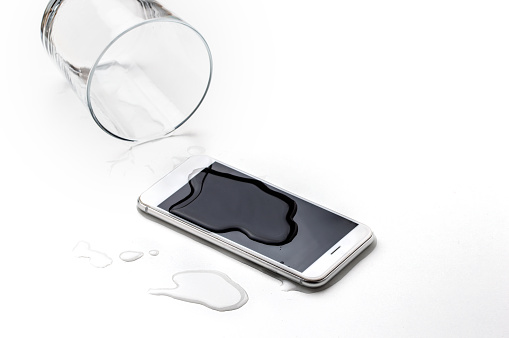Accidentally exposing your phone to water can be distressing, but quick and appropriate action can often prevent permanent damage. In this guide, we’ll explore effective methods to fix a water-damaged phone, backed by deep research and practical solutions.

Restoring a Water-Damaged Phone: Your Comprehensive Guide
Understanding Water Damage: Water damage affects various components like the battery, screen, and internal circuits. Immediate response is crucial to minimize harm.
Step 1: Remove from Water: Retrieve the phone from water promptly to prevent further exposure. Power it off immediately, if possible.
Step 2: Disassemble (if applicable): If your phone allows, remove the back cover, battery, SIM card, and any other removable parts. This aids in faster drying.
Step 3: Dry with Care: Gently pat the phone with a dry cloth to remove excess water. Avoid using heat sources like hairdryers as they can cause further damage.
Step 4: Rice or Silica Gel: Place the phone in a bag of rice or silica gel packets. These desiccants help absorb moisture. Leave it for at least 24-48 hours.
Step 5: Isopropyl Alcohol Bath (Optional): For advanced users, a dip in high-concentration isopropyl alcohol can displace remaining water. Consult manufacturer guidelines before attempting.
Step 6: Power On with Caution: After ensuring the phone is thoroughly dry, power it on cautiously. Monitor for unusual behavior.
Additional Tips and Considerations:
- Immediate Action Matters: The first few minutes are critical. Swiftly removing the phone from water minimizes the chances of extensive damage.
- Avoid Charging Initially: Refrain from charging the phone until you are certain it’s completely dry. Connecting a wet phone to a power source can lead to short circuits.
- Avoid Freezing Methods: Contrary to some suggestions, placing your phone in a freezer or using extreme temperatures can cause further harm. Stick to gentle drying methods.
- Professional Assessment: If you’re unsure about the extent of the damage or lack the confidence to perform DIY repairs, seek professional assessment and repair services.
- Consider Waterproof Cases: Prevention is key. Invest in waterproof cases or pouches to protect your phone from accidental water exposure.
- Backup Data Regularly: Regardless of water damage, it’s wise to regularly back up your phone’s data to prevent loss in case of unforeseen circumstances.
- Monitor for Lingering Issues: Even if your phone appears to function normally after water exposure, monitor it for potential issues such as battery drainage or erratic behavior, which may surface later.
Conclusion: While immediate actions like drying and desiccants can aid in fixing a water-damaged phone, the success of the recovery depends on factors like the duration of exposure and the severity of the damage. It’s advisable to act swiftly and, when in doubt, consult professional repair services.
FAQ (Frequently Asked Questions):
Q1: Should I use a vacuum cleaner to remove water from the phone?
Vacuum cleaners may cause static electricity, further damaging your phone. Stick to gentle drying methods like air-drying or desiccants.
Q2: Can I use a fan to speed up the drying process?
Yes, placing your phone in front of a fan on a low setting can help accelerate the drying process. Ensure the airflow is gentle.
Q3: What if my phone doesn’t turn on after drying?
Patience is key. Ensure the phone is thoroughly dry and consider seeking professional assistance.